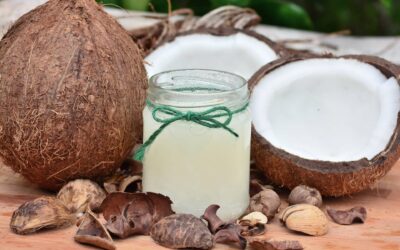Sunflower is a very admirable plant worldwide for its attractive and vibrant beauty not leaving out the most important which is a source of food with outstanding health benefits. Sunflower is classified under the Helianthus annuus botanical plants and can be found all over the world.
As a source of healthy foods, the sunflower seed is rich in a wide variety of nutrients, and the sunflower oil obtained is considered a healthy vegetable oil. The seeds are used as a tasty snack, and also for the production of health bars, spreads, flour, meal, and many more. Our focus here will be on sunflower oil, its health benefits, production process, market insight, and import considerations.
Sunflower Oil
The sunflower oil is obtained from the seed of the sunflower plant. With other sunflower varieties available, the most common sunflower plant used to obtain sunflower oil is the Helianthus annuus. Sunflower oil has been used for thousands of years and today, it is among the top producing edible vegetable oil in the world.
Sunflower oil is a refined, winterized vegetable oil with a natural source of essential nutrients. The oil is characterized by a combination of polyunsaturated and monounsaturated fats, very low saturated fats, and the presence of lecithin (1).
The oil is rich in a variety of vitamins including vitamin E which makes the oil vital for delicate and dry skin. The oil is well known as a great emollient with its conditioning, moisturizing and nourishing characteristics. With these parameters, the cosmetic industry uses the oil in their products to remedy damaged, aged, and weathered skin.
The grading for sunflower oil is usually determined by the oil fatty acid composition, antioxidant levels, not leaving out the grain weight and the oil percentage.
Sunflower oil is normally considered a premium oil, with the right balance of oleic acid, linoleic, and tocopherols, coupled with the monounsaturated fatty acid’s health benefits, the focus has been dedicated towards the development of new sunflower oil varieties.
Due to the recent increase in demand for oils high in oleic acids, new sunflower oil variants are being produced to meet the demand for this market. Oils rich in oleic acids are known to have greater oxidative stability and best for all applications.
Sunflower Oil Production Process
The world edible oil production has increased in recent years and the production of these oils greatly depends on the crops which can also vary from season to season. The quality of the oil produced greatly depends on the production process used in extracting the oil. The cold-pressed production process is one of the best methods as it preserves the quality of the oil which explains why we mostly work with cold-pressed oils.
Sunflower seed oil, cold-pressed, goes through minimal processing and the end product is a light, flavorful, and top quality oil suitable for a majority of cooking needs.
At the beginning of the production process, the sunflower seeds are processed through drying, cleaning, grading, roasting, and most often flavoring for food-grade seeds.
At the beginning stage, the seeds are machine or sun-dried under a 10% moisture content. After the drying process, the seeds are cleaned through wire screens and shaken to get rid of dirt and unwanted materials. The seeds can be further cleaned in large bins.
Once cleaned, the seeds are graded by sizing them through sizing screens with holds permitting the selection of seeds in different sizes. Small seeds are used to produce feeds for birds or pets, medium seeds are mostly used as ingredients for salads, cookies, and ice creams. The Large seeds are mostly processed for food snacks.
The seeds used for the production of oil are then de-hulled to ensure quality, not only for the oil but also for the meal. The oilseeds can contain about 20% to 30% hulls. De-hulling is usually done with the seeds at about 5% moisture content and after cleaning. The seeds are usually cracked through a mechanical process of centrifugal or pneumatic sheller. Sunflower seed oils with thin hulls will not go through the de-hulling process to avoid oil loss.
Once the seeds are de-hulled, the hulls are separated from the kernels and ready for grinding. Before the de-hulled seeds are ground, they are passed over magnets to remove the trace metal. The seeds are then grounded into a meal under proper consistency and through hammer mills or mechanized grooved rollers. During pressing, impurities can be detected which must be removed before the oil can be edible
The meal is then heated to facilitate oil extraction and passed through a screw press. Under increased pressure, the oil is squeezed through the slots in the barrel and recovered. To further extract additional oil from the pressed meal, a solvent extraction process is used for a maximum yield.
Hexane is commonly used to dissolve oil from the oil cake and recovered through a distilling process. Over 90% of the solvent found in the extracted oil naturally evaporates which can be collected and re-use. The stripping column can be used to extract the remaining solvent. When the oil is steam-boiled, the remaining lighter solvent rises to the top, which is then collected as the oil condenses.
At this stage, the oil can be refined to remove color, bitterness, and odor. With refining, the oil is heated up to 40°C -85°C and mixed with an alkaline substance like sodium carbonate or sodium hydroxide. Also, soap forms can be realized from the undesired fatty acids and alkaline additives. This can be removed through a centrifugal process.
The oil is then de-gummed by a water heat steam treatment. The majority of the unwanted materials are further removed. The oil used for cooking is then bleached and filtered through fuller’s earth, activated carbon, or activated clay to absorb any unwanted pigments from the oil. For oils used for dressing, it is chilled and also filtered to remove waxes. Through this means, the oil will not solidify when refrigerated.
Finally, the oil can be deodorized to obtain the refined oil. With deodorization, the steam is passed over hot oil at 225°C -250°C in other to distill the volatile and odor compounds from the oil. To improve shelf life, critic acid can be added to the oil (2).
The different categories of sunflower oil
Sunflower oil can come in different types or categories which can be distinguished from the different fatty acids compositions that may characterize the oil.
Sunflower oil may contain three different acids which include linoleic acid, oleic acid, and stearic acid. It is very important to note that the combination of these acids might not be suitable for certain applications.
Sunflower oil can be high or low in either of these acids. Sunflower oil which is considered high in linoleic acid contains about 68% of the oil. Sunflower oil high in oleic acid may contain up to 82% of the acid. Medium oleic acid sunflower oil contains 65% oleic acid and lastly, it is also common to find sunflower oil high in both oleic and stearic acid which may comprise of about 72% oleic acid and about 18% stearic acid (3)
Linoleic acid is also known as omega-6, which is a polyunsaturated fatty acid were as oleic acid is a monounsaturated fatty acid also known as omega-9. These characteristics help to keep the oil in liquid form under room temperature (4).
Both oleic and linoleic acids are known to be a good source of energy for the body and they contribute greatly to cell and tissue strength (5) (6). However, both acids are known to react differently when heated and during cooking which may also have certain effects on our health (7) and suitable for different applications.
Sunflower oil with high levels of stearic acid and oleic acid is not very suitable for home cooking. Stearic acid is known to be a saturated fatty acid with a variety of culinary applications and makes the oil solid under room temperature (8). The oil is mostly used in ice creams, chocolate, packaged foods and suitable for industrial frying (9).
Health Benefits of Sunflower Oil
As we stand to connect the world with the best alternatives in a way to alter unhealthy eating habits, we hereby present to you some of the health benefits of sunflower oil;
Rich in Oleic acids
Sunflower oil high in oleic acids can come with a wide variety of health benefits (10) (11). As mentioned earlier, sunflower oil can be high in Oleic acid and of about 80%. Oleic acid is a monosaturated fatty acid well known to reduce high cholesterol levels and help mitigate the risk of a heart disease.
Monosaturated fats are also known to increase the good cholesterol (HDL) levels in our system. Also, the FDA recommends and stands behind the health claim that vegetable oils with at least 70% of oleic acid can help with coronary heart disease (12)(13).
Lowers Cholesterol Levels
A study carried out not long ago was able to demonstrate that individuals who consume sunflower oil high in Oleic acid for a period of 10 weeks experienced lower blood levels of LDL (bad) cholesterol and triglycerides (14). High oleic sunflower oil can now be considered and recommended as a food that can help reduce the risk of heart disease when used instead of saturated fats(15).
High in vitamin E
It is well known that vitamin E obtained from food is more effective when compared to vitamin E derived from supplements. Sunflower oil is a good source of vitamin E and studies have been able to prove that vitamin E can help with brain and nerve health. It is known to reduce the progression of Alzheimer’s disease (16).
Other health benefits of sunflower oil include;
– Promoting a good and healthy skin as the oil is rich in vitamin A and Vitamin E.
– Works as an energy booster as it can help stimulate glycogen into the bloodstream from the liver.
– Supports a healthy and beautiful hair as it is rich in gamma alpha linolenic acid (GLA).
– Boost the immune system as the oil is rich in antioxidants.
-Helps with digestion as the oil is extremely light and easy to digest.
Sunflower Oil Market Insights
The overall sunflower market is expected to grow at a cumulative annual growth rate of 5.3% between the forecast periods of 2021 to 2026. However, the industry has been negatively impacted by the consequences of COVID-19 as the labor crisis was at its peak due to frequent lockdowns. This has had a major effect on sunflower prices as it has doubled during the past year.
On the other hand, preferences for healthy foods have been on an upscale across the globe. Even so, the cosmetic and pharmaceutical market is in need of the rewarding characteristics of sunflower oil in their industry. Despite the fact that sunflower oil prices have been doubling during the past year, the forecasted market signal indicates a record high for the sunflower oil market.
The global sunflower oil exports are expected to go up by 14% to an export value of 12.6 million tons by 2022 (17). High import demand is seen in the European Union, and the Asia pacific. Asia Pacific is the fastest growing market consumer of sunflower oil after the EU. In 2019, the Asia Pacific controlled a 30% market share for consumption globally. Industrial utilization and household demand are known to fuel the growth of sunflower oil in the Asia Pacific.
Top Exporters of Sunflower Oil Globally for the Year 2019
| Exporters | Value exported in 2019 (USD thousand) | Trade balance in 2019 (USD thousand) | Quantity exported in 2019 | Quantity Unit | Share in world exports (%) |
| Ukraine | 475,258 | 475,209 | 562,889 | Tons | 13.1 |
| Russia | 470,721 | 469,323 | 581,277 | Tons | 13 |
| Turkey | 417,767 | 380,585 | 447,687 | Tons | 11.5 |
| Hungary | 271,588 | 267,780 | 295,336 | Tons | 7.5 |
| France | 250,994 | 115,269 | 241,332 | Tons | 6.9 |
| Germany | 190,850 | 67,690 | 179,201 | Tons | 5.3 |
| Spain | 186,860 | 168,841 | 178,383 | Tons | 5.2 |
| Netherlands | 166,394 | 32,429 | 175,656 | Tons | 4.6 |
| Belgium | 141,986 | -72,483 | 126,745 | Tons | 3.9 |
| Argentina | 106,150 | 106,143 | 104,480 | Tons | 2.9 |
From the above table, Ukraine is the leading world exporter of sunflower oil with a market share of 13.1% with an export value of over $475 million for over 562 million tons of sunflower oil exported to the world in 2019. Russia comes in second with a market share of 13% with an export value of over $470 million. Turkey is in the third position with a market share of 11.5% with an export value of over $417 million.
Hungary, France, and Germany are responsible for a market share of 7.5%, 6.9%, and 5.3% respectively. As of 2019, Hungary, France, and Germany were responsible for an export quantity of over 295, 241, and 179 million tons respectively.
Import Considerations
It is of prime importance to always research on the requirements for importing sunflower oil in your market. Laws governing the importation of certain products can be different in other countries.
An important question is to ask yourself what the market needs. Which oil type commands the demand in your market? When you have these data, you can better understand the market demand and supply.
Once you have all the necessary information to make your decisions, you must also look for a reputable exporter of sunflower oil who can provide what your market needs and on a regular basis. When I say on a regular basis, this is of prime importance because there is nothing worst than when you can’t meet your customer’s needs. To solve this problem you can be working with 2 to 3 different suppliers at the same time.
Also, you should be mindful of illegitimate sellers posing as “top sunflower producers.” Due to the increase in the demand for sunflower oil, many fake suppliers have been flooding the market in the past years to take advantage of importers like you. Their prices are always below market price just to win your interest. Their terms and prices may sometimes sound unreasonable.
When Importing sunflower oil it is important to understand the purpose you are importing the oil for. Sunflower oil with high oleic and very low linoleic acid parameters is known to be the most stable sunflower oil for almost all applications. This may include the use of the oil in institutional and industrial frying, domestic cooking and dressing, and even for non-food applications.
Very high linoleic acid parameters can make the oil unstable in industrial applications. Sunflower oil with average oleic acid and very low linoleic acid is more suitable for industrial and institutional frying, and also as a dressing and cooking oil. It is very important to determine the application of the oil so as to import the quality that will best suit your needs or market demand.
It is very important to pay attention to the shipping conditions and packing. Make sure to check if the oils are properly packed and palletized the right way to avoid damage during transit. Make sure to factor in the delivery time, estimated time of sale in relation to the shelf life of the oil. Delays can be a common issue with some customs especially if you lack proper documentation. The right supplier will enlighten you on shipping procedures and documents you may need if they have experience shipping to your market.




